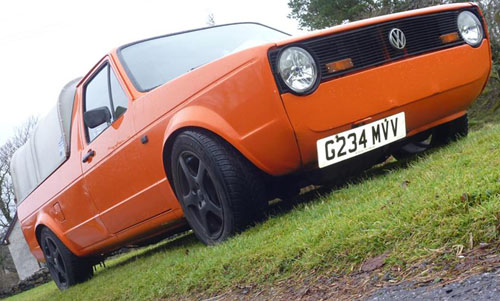EIGHT of the UK’s top ten centres for passing driving tests are in the Scottish highlands and islands.
Newest figures from the Driving and Vehicle Standards Agency (DVSA) have shown that whilst the national average pass rate is 47%, highland and island drivers are enjoying pass rates as high as 83%.
And if you’re a male learner Barra is the place to take your test, with 100% of men earning a pass on the island – although just six took the test there in the past year.
The newest set of the figures, which are released annually, showed that the remotest parts of Scotland are tightening their grip on the top ten places to pass your test.

In 2013/14 just seven of the top ten test centres were in Scotland, with the highest pass rate standing at 80%.
But in the new figures eight of the top spots were reserved for Scottish test centres, with the highest pass rate for a centre also rising to 83%.
The figures revealed that rural drivers in the remote corners of Scotland face far better odds of passing their practical test than others across the UK.
Drivers in Mallaig, a west coast town with a population of 797, enjoyed a pass rate of 83% – 36% more than the national average – although only 20 students sat their test in the town in the last year.
The 16 learners who sat their test on Barra – which has just one A road in a 13 mile loop – also had an extraordinarily high pass rate of 81%,
The next highest pass rates were 74% in the west coast village of Kyle of Lochalsh and 71% and on Skye.
The now-closed Kendal test centre in the Lake District and the Whitby centre in North Yorkshire were the first locations outside of rural Scotland to appear – tying for 5th place with 70% pass rates.
Centres in Ballater, on Arran, Orkney and in Lochgilphead occupied the remaining spots in the top ten, with pass rates between 69% and 67%.
Meanwhile, those taking their tests in Scots cities faced mixed odds.
The two Edinburgh test centres had pass rates around the national average, with 46% and 48% respectively, whilst Dundee learners faced slightly better odds of 52%.
The situation was bleakest in Glasgow, however, where the Shieldhall test centre in the west of the city recorded the lowest pass rate in Scotland – just 38%.
The UK-wide low pass rate went to the Belvedere test centre in south east London, which has a pass rate of 30%.
Male drivers taking their test on Barra faced the best odds in the country – with a 100% pass rate – although just six male students took their test at the centre in the past year.
And female candidates fared best in Mallaig, with an 89% pass rate – after eight out of nine passed.
The statistics have sparked concerns that rural drivers are not facing the same rigorous testing as their metropolitan counterparts.
But Kevin Delaney, Head of Road Safety for the Institute of Advanced Motorists, said the rural test centres’ high pass rates could be explained by the calming setting giving a “psychological advantage.”
He explained: “The standards that are required are exactly the same across the board.
“What is different is the hazards you face, such as the level of traffic.
As a result he said, the “stress factor” of exams is reduced, relaxing drivers and increasing chances of a pass.
He said safety concerns were not relevant as the hazard test in the theory exam was added to ensure that all drivers were tested to the same standard of hazard perception.
He said that the real danger came from novice drivers who had not experienced a range of driving conditions before passing their test.
“The problem comes when someone passes their test in a rural area, hops in their car and drives into the middle of Glasgow
“And if all you’ve known is driving around the suburbs of Glasgow and then you leap into your car and drive off north, you’re going to be in just as much trouble as someone from a rural area who comes to Glasgow.”